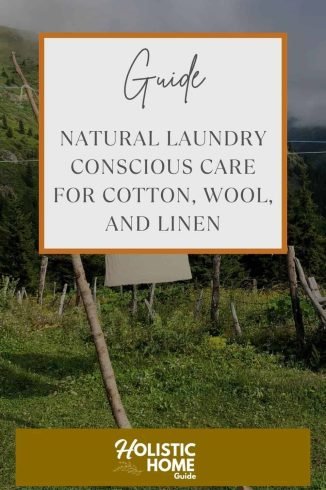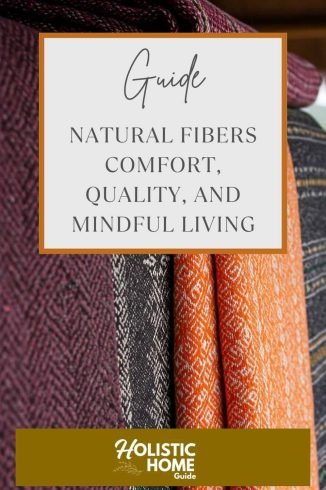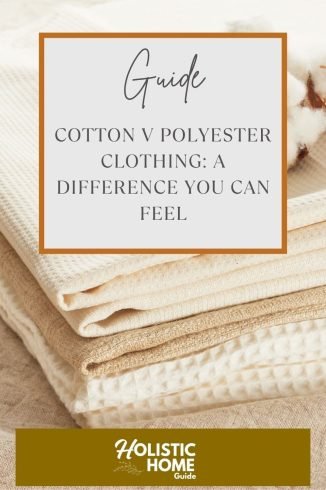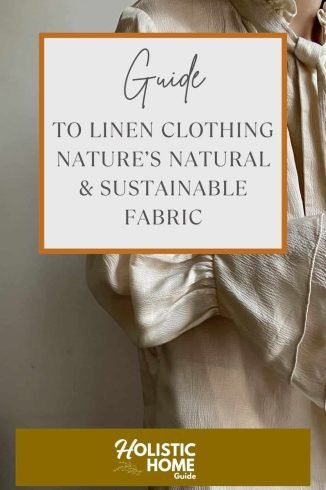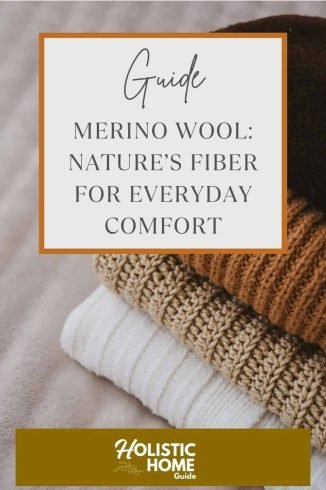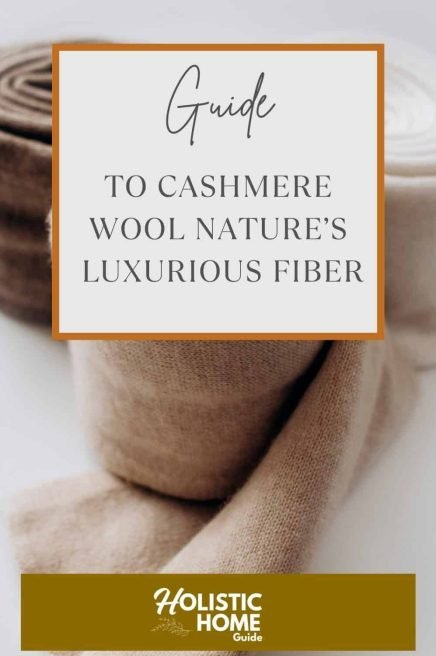There’s something timeless about the feel of cashmere wool — that buttery softness, the gentle warmth, and the sense of comfort that feels alive. More than a symbol of luxury, cashmere wool connects us back to nature and to the centuries-old craftsmanship behind this extraordinary fiber.
In this guide, you’ll discover where cashmere comes from, what makes it so special, and how to choose and care for it consciously. You’ll also learn how to recognize truly sustainable cashmere that honors both the animals and the land it comes from.
This post may contain affiliate links which means we may receive a commission for purchases made through links. As an Amazon Associate we earn from qualifying purchases. Learn more on our Privacy Policy.
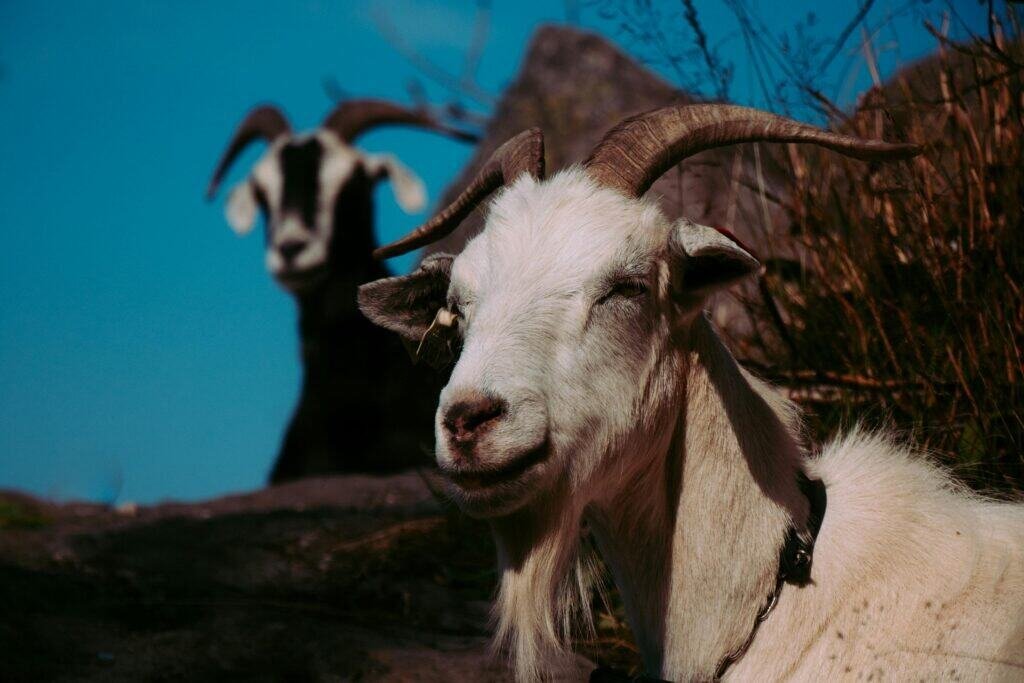
What Is Cashmere Wool?
Cashmere is a natural fiber that comes from the fine undercoat of goats raised in cold, dry regions like Mongolia, Nepal, and northern China. To survive harsh winters, these goats grow an incredibly soft layer of insulating fiber under their outer hair. Each spring, herders gently comb or shear this undercoat by hand — a process that honors both the animal and the land.
Unlike ordinary wool, cashmere fibers are far finer and smoother. This delicate structure gives the material its signature lightness, warmth, and silky texture. It takes the undercoat of several goats to make a single sweater, which explains both the rarity and value of authentic cashmere wool.
The Natural Qualities of Cashmere Wool
- Extremely soft and gentle on the skin
- Lightweight yet provides exceptional warmth
- Breathable and moisture-regulating
- Long-lasting with proper care
- Fully biodegradable and natural
Cashmere is more than just a soft fabric — it’s a living material that breathes, adapts, and responds to the body. Natural fibers like this carry a certain energy that feels grounding. They allow the skin to breathe while retaining warmth in cooler temperatures. In a world full of synthetics, this gentle, natural comfort feels like a quiet luxury.
How Cashmere Wool Is Made
The process of transforming raw cashmere into a soft garment is both traditional and refined. Every stage matters — from herding practices to spinning techniques.
1. Combing and Collecting
Each spring, herders comb the goats’ undercoats to collect the softest fibers. This is done carefully and respectfully to avoid harming the animals.
2. Cleaning and Dehairing
The raw fibers are gently washed to remove dirt and oils. Then they are separated from the coarser outer hairs, leaving only the finest strands of down.
3. Spinning and Dyeing
The clean fibers are spun into yarn and dyed using natural or low-impact dyes. Traditional methods preserve the softness and natural sheen of the material.
4. Knitting or Weaving
Finally, the yarn is knitted or woven into scarves, sweaters, throws, or accessories. Skilled artisans shape each piece, allowing the fiber’s natural qualities to shine.
Why Sustainable Cashmere Wool Matters
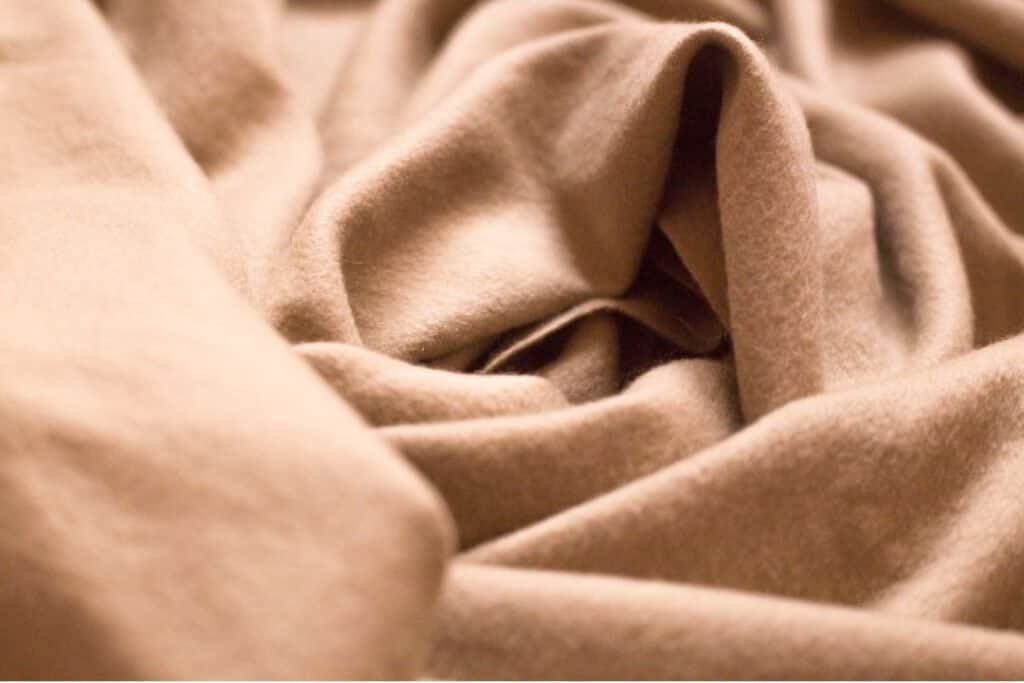
Cashmere wool’s growing popularity has come with environmental costs. In regions where herds have expanded too quickly, fragile grasslands have been overgrazed, leading to soil erosion and habitat loss. Sustainable cashmere focuses on restoring balance — supporting both the environment and the communities who depend on it.
Environmental Advantages of Conscious Cashmere Wool
- Ethical herding ensures grasslands can regenerate naturally.
- Traceable supply chains promote transparency and fair labor.
- Eco-friendly dyeing and washing reduce chemical and water use.
- High-quality garments last longer, reducing textile waste.
- Recycled cashmere fibers help conserve resources and reduce impact.
Look for certifications such as The Good Cashmere Standard, Textile Exchange, or Fair Trade Certified. These guarantee humane treatment of animals, respect for workers, and protection of ecosystems.
How to Identify Ethical Cashmere Wool
Not all cashmere is equal. Mindful shopping means choosing pieces that reflect quality, transparency, and sustainability. Here’s what to look for:
- Check the label: Seek 100% cashmere wool or recycled blends for durability and softness.
- Research the brand: Responsible producers disclose where their fibers come from.
- Buy less, choose better: One well-made sweater can last for decades.
- Support small-scale production: Artisans and cooperatives often use traditional, low-impact methods.
Each mindful choice helps protect the animals, artisans, and landscapes that give us this remarkable fiber.
Cashmere Wool vs Other Natural Fibers
| Fiber | Softness | Warmth | Breathability | Sustainability |
|---|---|---|---|---|
| Cashmere Wool | Extremely soft | Excellent | Good | High (if responsibly sourced) |
| Merino Wool | Soft | Excellent | Excellent | High |
| Cotton | Moderate | Light | Excellent | Varies (organic preferred) |
| Linen | Crisp | Moderate | High | Very high |
How to Care for Cashmere Wool Naturally
Cashmere is surprisingly durable when treated with care. Over-washing or exposing it to heat can weaken the fibers, while gentle handling helps it stay soft and strong for years.
Washing Tips
- Hand wash in cool water with a mild, natural detergent.
- Avoid twisting or wringing; press gently to remove water.
- Lay flat on a towel to dry, away from sunlight or heat.
Storage and Longevity
- Fold instead of hang to prevent stretching.
- Use breathable cotton storage bags with cedar or lavender to deter moths.
- Gently remove pilling with a cashmere comb or soft brush.
With the right care, your cashmere can remain as soft and elegant as the day you bought it — a lasting companion through many seasons.
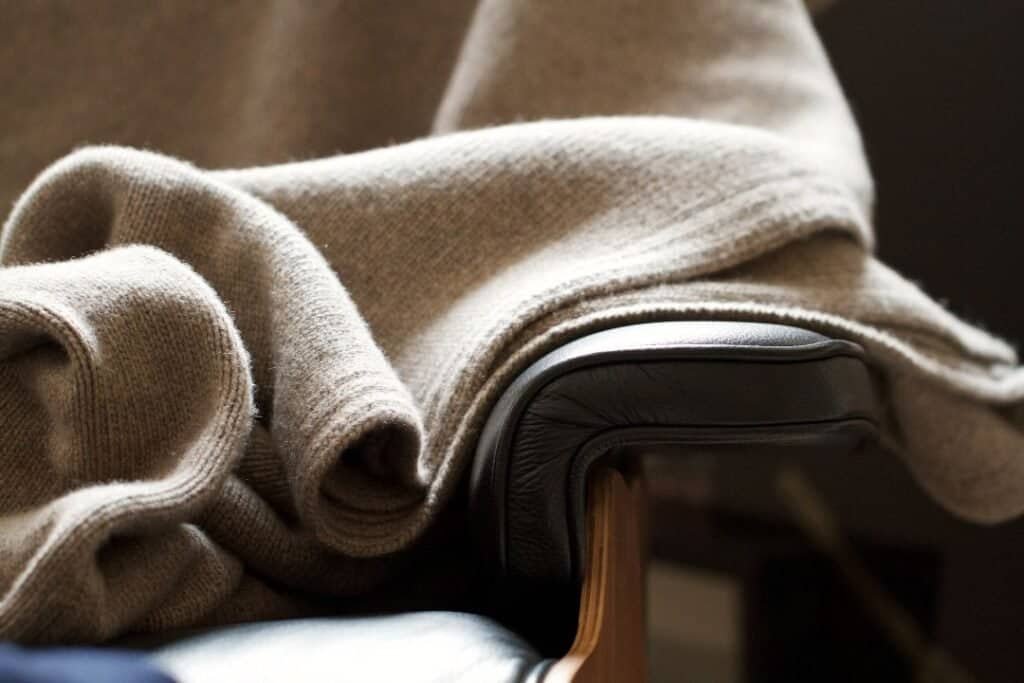
Frequently Asked Questions
Is cashmere warm? Yes. Cashmere fibers trap heat efficiently, providing insulation without heaviness. It’s perfect for cool climates and all-season layering.
Will cashmere shrink? Only if exposed to hot water or heat. Always wash in cool water and air dry flat to preserve its shape.
Is cashmere itchy? No. High-quality cashmere wool is incredibly soft and smooth, making it comfortable even for sensitive skin.
Can cashmere be sustainable? Absolutely. When responsibly sourced and processed without harsh chemicals, cashmere wool can be a renewable, eco-friendly fiber.
Mindful Takeaway: Cashmere Wool as a Connection to Nature
Choosing cashmere wool consciously is about more than clothing — it’s about connection. Every fiber holds the story of mountain winds, quiet herders, and the rhythm of the natural world. By caring for it well and supporting sustainable production, we honor that story.
Next time you reach for something soft and warm, choose a natural fabric made with integrity. Let each piece you wear reflect not only your style but also your respect for the Earth that created it. Bring mindfulness into your wardrobe by supporting ethical brands and choosing timeless, high-quality pieces. Care for what you own and cherish the comfort that nature provides.

